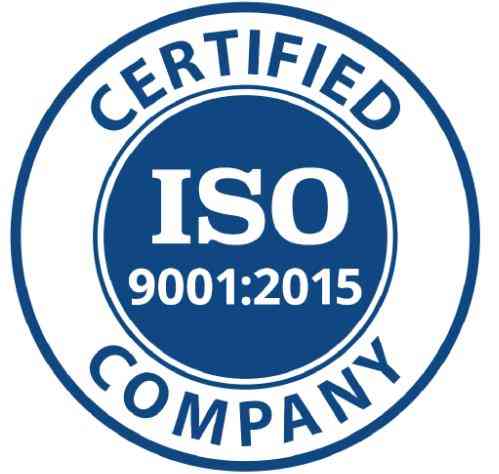|
IS0
O R G A NI Z AT1 O N FOR STAND AR D IZATlO N
INTERN AT I ON A L
IS0 RECOMMENDATION
R 698
FILLER RODS FOR BRAZE WELDING
METHODS OF TEST FOR DETERMINING
THE CONVENTIONAL BOND STRENGTH
ON STEEL, CAST IRON AND OTHER METALS
1 st EDITION
March 1968
COPYRIGHT RESERVED
The copyright of IS0 Recommendations and IS0 Standards
belongs to IS0 Member Bodies. Reproduction of these
documents, in any country, may be authorized therefore only
by the national standards organization of that country, being
a member of ISO.
For each individual country the only valid standard is the national standard of that country.
Printed in Switzerland
Also issued in French and Russian. Copies to be obtained through the national standards organizations.
---------------------- Page: 1 ----------------------
BRIEF HISTORY
The IS0 Recommendation R 698
Filler rods for braze welding - Methods of test for
determining the conventional bond strength on stee1,cast iron and other metals, was drawn up
by Technical Committee ISO/TC 44, Welding, the Secretariat of which,is held by the
Association Française de Normalisation (AFNOR).
Work on this question by the Technical Commi ttee began in 1957 and led, in 1961,
to the adoption of a Draft IS0 Recommendation.
In October 1965, this Draft IS0 Recommendation (No. 845) was circulated to all
the IS0 Member Bodies for. enquiry. It was approved, subject to a few modifications
of an editorial nature, by the following Member Bodies :
Ireland Spain
Australia
Austria Israel Sweden
Brazil Italy Switzerland
Canada U.A.R.
Japan
Netherlands United Kingdom
Chile
New Zealand U.S.S.R.
Denmark
Portugal Yugoslavia
France
India Romania
Four Member Bodies opposed the approval of the Draft :
Belgium
Germany
South Africa, Rep. of
U.S.A.
The Draft ISORecommendationwas then submitted by correspondence to the IS0
Council, which decided, in March 1968, to accept it as an IS0 RECOMMENDATION.
-2-
---------------------- Page: 2 ----------------------
ISO/R698-1%8 (E)
IS0 Recommendation R 698 March 1968
FILLER RODS FOR BRAZE WELDING
METHODS OF TEST FOR DETERMINING
THE CONVENTIONAL BOND STRENGTH
ON STEEL, CAST IRON AND OTHER METALS
FOREWORD
This Is0 Recommendation is a companion to IS0 Recommendation R 688, Filler rods
for braze welding - Methods of test for determining the characteristics of the deposited metal.
1. SCOPE
This IS0 Recommendation describes tests for filler rods for braze welding to deter-
mine the conventional bond strength on
- steel
- cast iron
- other metals and alloys.
The conventional bond strength of a braze welding filler metal on a parent metal is
determined by means of a tensile test in which the stress is applied to the normal
cross-sectional area of the test piece.
2. DETERMINATION OF CONVENTIONAL. BOND STRENGTH ON STEEL
2.1 Assembly
2.1.1
Type of assembly and choice of parent metal
2.1.1.1 In order to determine the conventional bond strength of braze welding
filler metals on steel, a single Vee butt joint assembly without agap,as
shown in Figure 1, should be braze welded.
2.1.1.2 The plates should be of mild steel. The faces of the bevel, which should
be smooth, as well as the immediately surrounding areas (over a width
of 10 to 15 mm) should be cleaned of oxide and other surface contami-
nation and degreased before assembly.
2.1.2 Operating conditions
2.1.2.1
The thickness of the plates and the operating conditions should be chD sen
as follows, depending on the diameter of the filler rod : *
-~
*
Care should be taken to ensure a level joint assembly.
-3-
---------------------- Page: 3 ----------------------
ISO/R 698-1%8 (E
TABLE 1
Diameter of filler rod
2 2.5 3.15 4 5 6.3
in millimetres
Thickness (e) of plates
5 5
8 10 10 10
in millimetres
Acetylene consumption of
blowpipe in litres per 150 150 200 250 315 315
hour *
Number of runs 2 to 3
2.1.2.2
The assembly should be made by the leftward method, welding ugward,
the plates being in a slightly inclined position (approximately 30 ). As
the straightening of the plates after welding is forbidden, precautions
should be taken to keep the assembly as flat as possible.
The blowpipe should be fed with correctly purified acetylene and with
98 %. The flame should be neutral?"
oxygen having a minimum purity of
unless otherwise recommended by the manufacturer of the filler rod.
The nature of the flame, whether neutral or oxidizing, should be stated
in the test report.
If a cleaning flux is necessary, the flux appropriate to the filler rod
2.1.2.3
being tested should be applied.
2.2 Tensile tests
2.2.1 Preparation of tensile test.pieces
a2.1.1 Six test pieces should be taken as shown in Figure 2
2.2.1.2 After removal of the excess metal by machining from the two faces,
the rectangular tensile test pieces should be machined as shown in
Figure 3. The edges are machined rectilinear, parallel and rounded to
a radius not exceeding 2 mm.
2.2.2 Tensil
...














